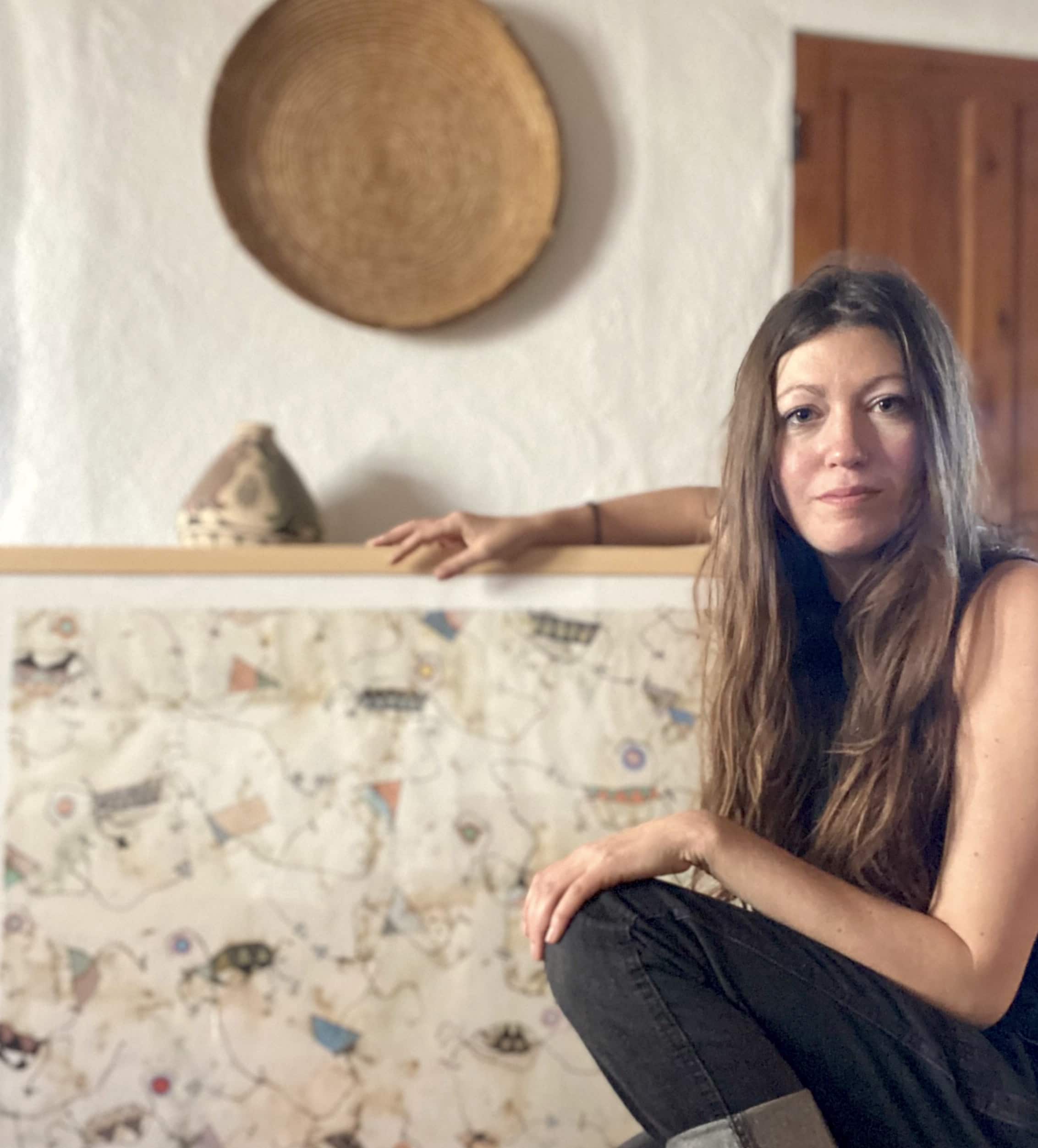Scout Dunbar is a third-generation female artist from Ithaca, NY. She received her BFA from Alfred University in 2011. She has exhibited nationally and internationally in venues such as Robert Blackburn Printmaking Studio, NYC (2013), Limerick Printmaking Studio in Limerick Ireland (2013), Air Gallery in Brooklyn, NY (2014) Cornell University in Ithaca, NY (2017), and Tiger Strikes Asteroid in Los Angeles, CA (2018.) In 2012 she completed a fellowship at the Ink Shop Printmaking Center in Ithaca, NY, followed by a studio internship at Dieu Donne, a contemporary paper-making studio in Brooklyn. Her work has been featured in publications in the Ithaca Times, Studio Visit Magazine, the Edinburg Press, and Create! Magazine. Dunbar currently resides in Tucson, Arizona where she creates landscapes and abstract line drawings based on the majestic Southwest.
Statement
“My Geometric Landscape series is an on-going investigation into line, pattern, color, and material on paper. I begin my process by using a trace transfer printmaking method, followed by the direct application of paint, colored pencil, and oil pastel onto the paper’s surface. The resulting image is a complex field of layered grids, curvilinear lines, and repetitive pattern. At first glance, the work feels purely decorative; a patchwork of geometric shapes and patterns that are evocative of fabric quilts or southwestern style textile. Upon deeper examination, a dialogue between organic, improvised form and mathematical, systematic structure is revealed. An effort to harmonize these opposing forces is what guides the direction of this series.
“Made concurrently with the Geometric Landscapes, my Line Drawings conversely offer a sense of playful lightheartedness through both color palette and subject matter. Using freeform drawing as a catalyst, the compositions in this series unfold organically. Rudimentary shapes and abstract, biomorphic forms float across the surface, grounded only by the web of delicate lines from which they emerge. Negative space is considered a necessary respite and is balanced by pockets of refined pattern and contrasting color. The non-objective nature of these images invites interpretation and provides the viewer an opportunity to connect personally with the work.”
– Scout Dunbar

